Bike Courier Services Boom in China During Coronavirus
Bike Courier Services Boom in China During Coronavirus
—COVID-19 is delivering new opportunities but are westerners picking up?
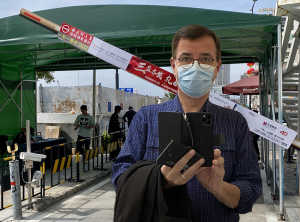 As an Australian “lost somewhere” in China, I know something of what it is like to be emerging out the other side of the coronavirus COVID-19 crisis.
As an Australian “lost somewhere” in China, I know something of what it is like to be emerging out the other side of the coronavirus COVID-19 crisis.
It is a day-to-day experience—a journey, rather than an event. Now, on day 70, much of the country is still in “lockdown.” Schools, gatherings, events and many shops remain shut. You must wear a face mask in public and be temperature-checked whenever you enter a shopping or workplace complex. Most malls require you to register on the WeChat phone app before entering. The app uses your phone’s inbuilt GPS and cellular technologies to provide an instant report or your movements for the past 14 days. If you have been quarantined in the local district, you receive a “green tick” on the phone and allowed to enter.
At the peak of the COVID-19 outbreak in China, some 780 million people (more than half of the country’s population) were in home lockdown. Despite being behind locked gates and guarded checkpoints, deliveries of fruit and vegetables, piping hot noodles, kitchenware, baking products and meals from McDonalds, Burger King and other restaurants are being delivered by an estimated three million delivery riders often within 20 minutes—for less than one US dollar!
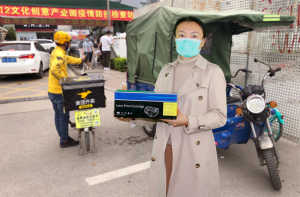 Parcels containing printer cartridges necessary for the huge number of quickly established home offices arrive within hours. Those locked away have found they can order a wide range of products. China’s JD.com, for example, boasts 90 percent of its homeware and apparel orders get delivered within 24 hours—some having to travel hundreds or thousands of kilometres.
Parcels containing printer cartridges necessary for the huge number of quickly established home offices arrive within hours. Those locked away have found they can order a wide range of products. China’s JD.com, for example, boasts 90 percent of its homeware and apparel orders get delivered within 24 hours—some having to travel hundreds or thousands of kilometres.
China’s “army” of Deliveroo couriers on bicycles has seen a 400% spike in online grocery sales these past three months and are just one example of how the world will look different post-coronavirus. After a burst of initial panic-buying stripped the shelves bare of fresh food in local supermarkets here in China, people hunkered down in their apartments. The streets were empty. People were frightened and did not want to risk contamination by going outside. This is where online purchasing went to unprecedented levels. And delivery services followed suit.
 Even before the virus struck, online food delivery was a US$65 billion market in China, serving more than 500 million customers. But now, instead of purchasing online once a month, they are buying essentials every other day.
Even before the virus struck, online food delivery was a US$65 billion market in China, serving more than 500 million customers. But now, instead of purchasing online once a month, they are buying essentials every other day.
Delivery riders used to collect straight from restaurant kitchens and deliver to customers’ front doors. Now that we live in a coronavirus world, new regulations have curbed the level of permissible human contact. Couriers now pick up and deposit orders from special terminals outside commercial premises and housing blocks.
Ahead of the West
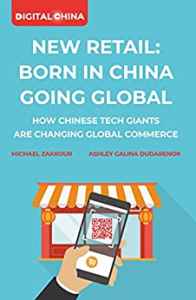 “China is a good four or five years ahead of where the West is, in terms of logistics and digital commerce and retail,” says Michael Zakkour, a global digital commerce consultant and the author of New Retail: Born in China Going Global. The book is available on Amazon. According to Zakkour, in just a few short years, 800 million consumers are taking a new world order of convenience for granted—at a level that is difficult to imagine anywhere else.
“China is a good four or five years ahead of where the West is, in terms of logistics and digital commerce and retail,” says Michael Zakkour, a global digital commerce consultant and the author of New Retail: Born in China Going Global. The book is available on Amazon. According to Zakkour, in just a few short years, 800 million consumers are taking a new world order of convenience for granted—at a level that is difficult to imagine anywhere else.
He reveals how a “perfect storm” of smart devices, digital payments, e-commerce and the need to modernize physical stores has totally disrupted a buying and selling culture that is 5,000 years old. The coronavirus has been a catalyst for this “perfect storm.” Amazon-type services in the west are still in their early stages of development and during this crisis have been unable to keep up with the deluge of orders. From what I have seen, social media went into melt-down with complaints of product or delivery unavailability, not only in physical stores but on e-commerce platforms like Amazon Fresh, Instacart, Walmart, and Shipt (in the USA).
Hilary George-Parkin, writing for vox.com, identifies some reasons why China has been quick to deliver during this crisis:
- most Chinese consumers already use shopping apps: the country’s online retail market was worth nearly US$2 trillion in 2019, according to eMarketer, accounting for 35.3 percent of total retail sales — far higher than any other country in the world;
- Chinese businesses have pioneered “contactless delivery” where orders are left at a gate or designated drop-off station to help minimise all contact between customers and couriers during the outbreak;
- the country’s leading e-commerce and food delivery apps have also invested heavily in warehouse automation, delivery drones, and unmanned delivery robots — moves that, while perhaps intended to reduce long-term costs, also make the companies less vulnerable to potential labor shortages.
In my view, the Chinese also have a vivid memory of the SARS epidemic of 2003 which also saw a disruption to travel, work and the economy. The Chinese were afraid to go outside at that time, too. The founder of Jing Dong (JD.com), one of China’s largest online retailers, moved his physical stores in Zhongguancun to an online store. And Alibaba’s B2C commerce platform also set up Taobao. In this way, SARS created the perfect storm for Chinese e-commerce to change Chinese consumption forever. COVID-19 has intensified the appetite for shopping and door-to-door deliveries.
Continuing to Evolve
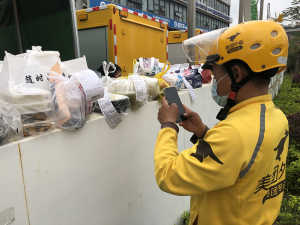 From what I can see, the “deliveroo” experience is continuing to evolve. Ordering online and enjoying the door-to-door delivery service can only continue to flourish here.
From what I can see, the “deliveroo” experience is continuing to evolve. Ordering online and enjoying the door-to-door delivery service can only continue to flourish here.
MTDP, a super-app restaurant delivery platform has extended its service to the delivery of everyday supplies and is now partnering with over 7,000 brick-and-mortar supermarkets to process digital orders and deliver to individual households.
Meituan, one of China’s biggest food delivery companies, has started to offer a “non-contact” delivery service, where uniforms, containers and employee practice are modified to ensure there is no possible exposure to anything extraneous and potentially virus-carrying, This has also resulted in a boost to sales with deliveries quadrupling during the coronavirus lockdown period.
It’s interesting to note that KFC and Pizza Hut couriers will wait for their customers to arrive at the security gate pickup location rather than just leave the packaged food in the make-shift tents and receiving areas. They remove the food from its case then step back at least 3 metres to allow the customer to pick it up. These practices were unheard of pre-COVID-19.
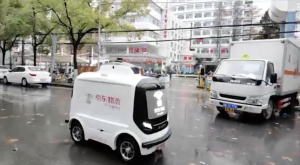 In terms of physical delivery, Alibaba’s Cainiao Network and its competitor JD.com have also been experimenting with new automated technologies in a bid to gain an advantage over Western rivals Amazon and Alphabet vying the lucrative Chinese e-commerce market. Back in 2018, for example, JD.com had tested drone delivery in remote areas near Xi’an and driverless smart vehicles in Haidian District in Beijing.
In terms of physical delivery, Alibaba’s Cainiao Network and its competitor JD.com have also been experimenting with new automated technologies in a bid to gain an advantage over Western rivals Amazon and Alphabet vying the lucrative Chinese e-commerce market. Back in 2018, for example, JD.com had tested drone delivery in remote areas near Xi’an and driverless smart vehicles in Haidian District in Beijing.
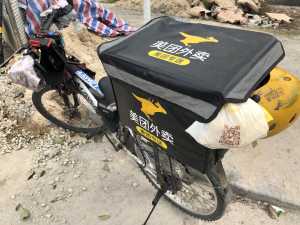 In the scheme of things, however, human delivery couriers still play an indispensable part in the process. It seems to me to be a thankless task, having to work under crushing workloads, negotiating snarled traffic in driving rain, enduring bone-shattering accidents and being penalised for late deliveries or customer complaints—all for 70 cents per delivery.
In the scheme of things, however, human delivery couriers still play an indispensable part in the process. It seems to me to be a thankless task, having to work under crushing workloads, negotiating snarled traffic in driving rain, enduring bone-shattering accidents and being penalised for late deliveries or customer complaints—all for 70 cents per delivery.
“It’s pretty impressive,” Jeffrey Towson, a private-equity investor and a professor of business at Peking University in Beijing told Time Magazine. “People are underestimating the learning curve that’s happening in China. The digital connectivity and the logistics network have really jumped into this breach.”
As businesses and governments around the globe continue to combat the coronavirus crisis, there are many opportunities on offer. Is there an appetite in North America, Western Europe and my homeland of Australia to look for digital logistics platforms and high-tech last-mile delivery opportunities like this?
Related:
Comment:
What do you think about the Courier Services Boom During Coronavirus in China? Is this something that could be better adopted in the west? Please add your comments below or join the conversation on LinkedIn.

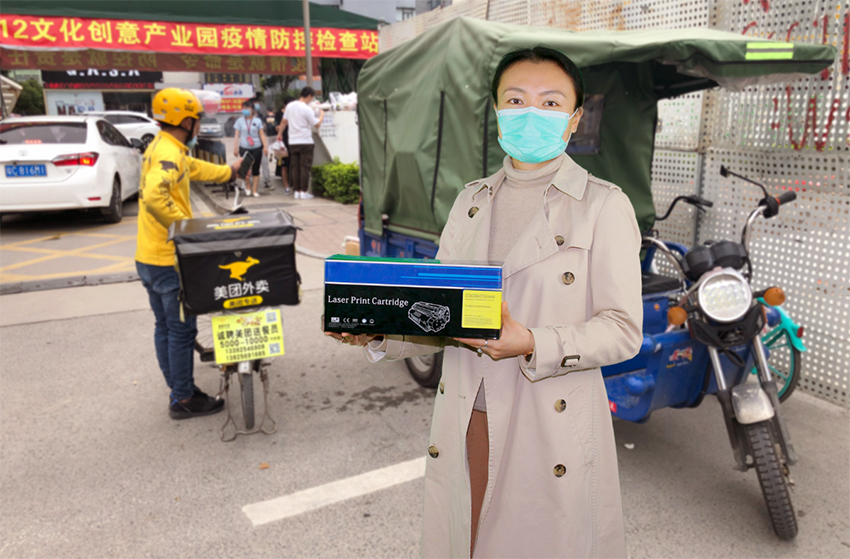


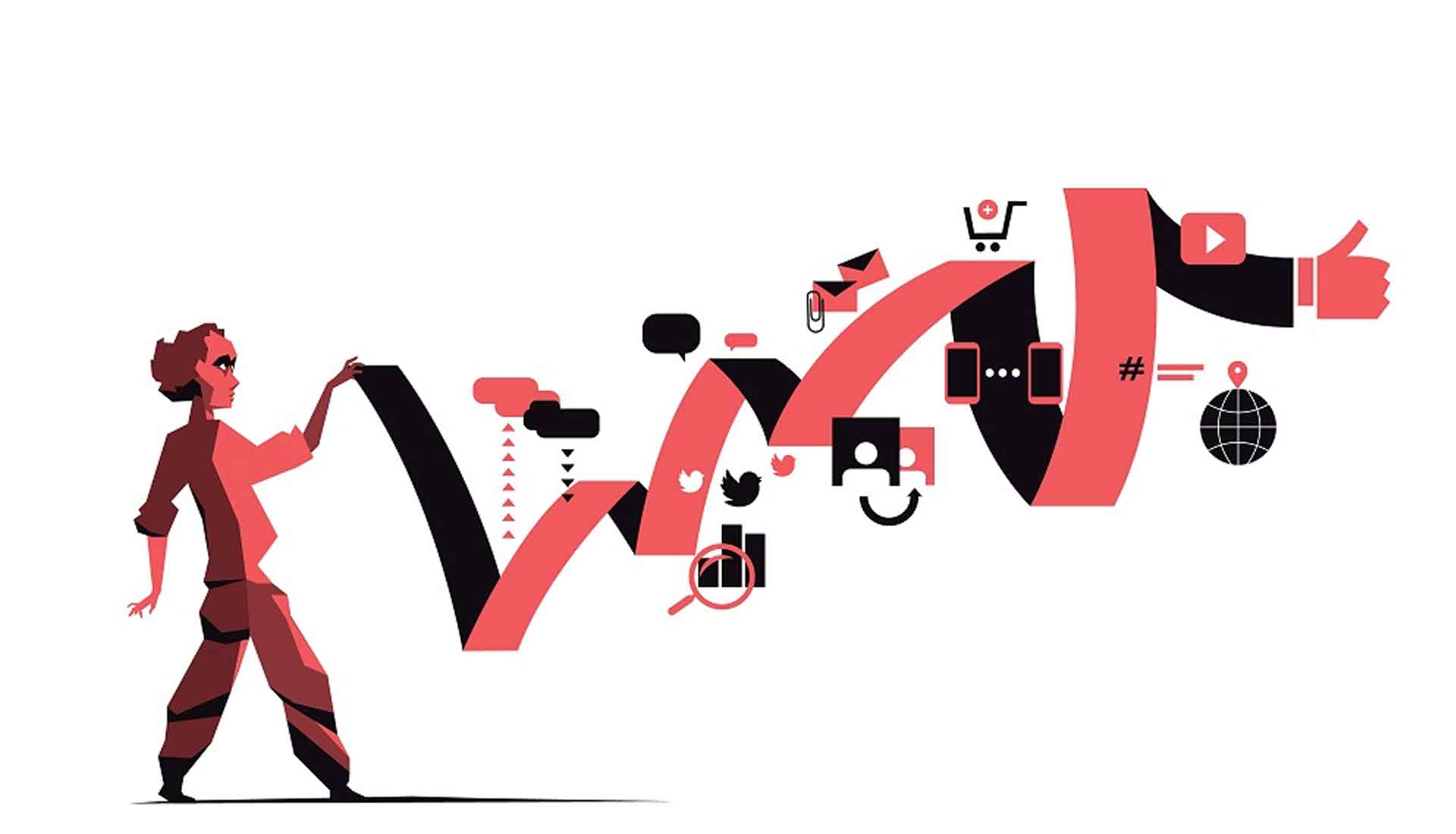








what a nice idea!
bicycle courier service.